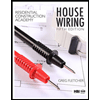Sign (L, x L) Resultant of wind pressure Pipe column D Overturning moment -B about x axis FH F at each 4 bolt at each 4 bolt (a) Рipe columa W FH = Rh One half of over turning moment about x axis acts on each bolt pair Base plate (p) F14- Footing Tension TR RCompression (b) FH FH -b=D12 in. -h 14in. R+ R- R- (c)
A sign of weight W is supported at its base by four bolts anchored in a concrete footing. Wind pressure p acts normal to the surface of the sign; the resultant of the uniform wind pressure is force F at the center
of pressure (C.P.). The wind force is assumed to create equal shear forces F/4 in the y direction at each bolt (see figure parts a and c). The overturning effect of the wind force also causes an uplift force R at bolts A and C and a downward force (-R) at bolts B and D (see figure part b). The resulting effects of the wind and the associated ultimate stresses for each stress condition are normal stress in each bolt (σu = 60 ksi); shear through the base plate (τu = 17 ksi); horizontal shear and bearing on each bolt (τhu = 25 ksi and σbu = 75 ksi); and bearing on the bottom washer at B (or D) (σbw = 50 ksi). Find the maximum wind pressure pmax (psf) that can
be carried by the bolted support system for the sign if a safety factor of 2.5 is desired with respect to the ultimate wind load that can be carried.
Use the following numerical data: bolt 3 in. db = 4 ; washer dw = 1.5 in.; base plate tbp = 1 in.; base plate dimensions h = 14 in. and b = 12 in.; W = 500 lb; H =17 ft; sign dimensions Lv = 10 ft. XLh = 12 ft.; pipe column diameter d = 6 in.; and pipe column thickness t = 3/8 in.

Trending now
This is a popular solution!
Step by step
Solved in 9 steps







